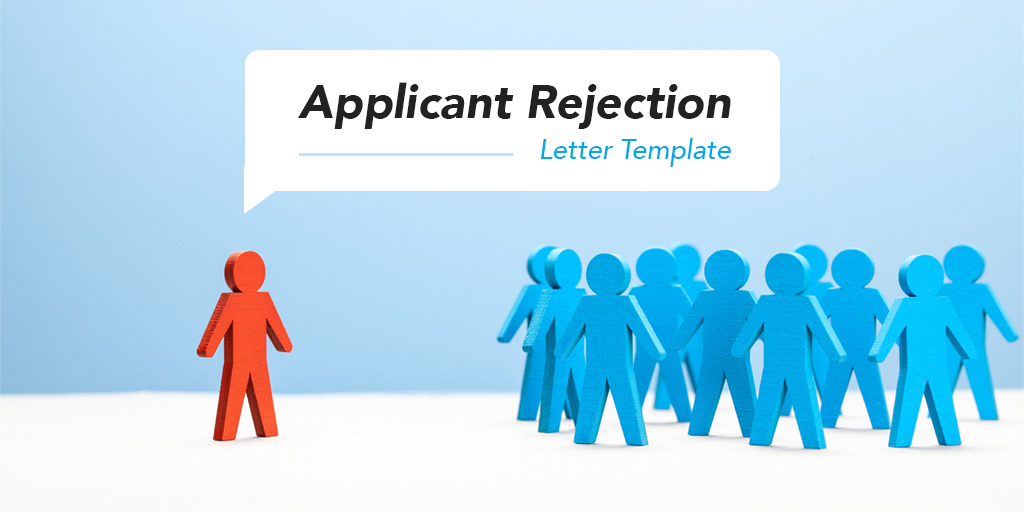The fast food industry is currently experiencing a turnover rate of about 144%. When hiring a replacement , companies need to incur turnover costs, including costs of hiring, onboarding, lower productivity, and errors committed by new employees due to lack of familiarity. Another forgotten cost is social capital.
On average, losing an employee can cost up to 200% of their annual pay, depending on their role. The aggregated expense incurred from turnover rates is huge.
Bearing that in mind, it’s essential that companies attract the right candidates who will not abruptly leave their company. A clearly written and well-thought-out job posting can help you attract the right candidates.
But in a sea of job postings across different job boards, how do you make sure that yours is seen? Here's how to write a job posting that attracts the right talent.
How to Create a Job Posting?
Write a compelling introduction
If you're asking yourself how to write a job posting, a catchy job title isn’t enough. You need to have a compelling introduction as well. It’s important to directly address the reader. Share details about your role and the requirements of your ideal candidate.
The best introductions are 2-3 sentences long, concise, and appeal directly to the audience. If your role offers something unique, call it out here. Depending on the culture and environment of your organization, you may also choose to vary the tone. For example, if you're hiring for a quick-service restaurant (QSR), you can decide to adopt a formal, professional approach, or embrace more casual language and fun punctuation to highlight your team’s personality.
Start by giving readers a video about your company and open job role. Avoid terms such as “help us,” “work for us,” etc. This puts a hierarchical gap between prospective job candidates and the company. Opt for positive terms like, “join our fun, high-energy team" in the job description.
Then, give a summary of what the role entails and the value it adds to your organization. This is where storytelling comes in handy, which can help in making the post stand out. For example, "As a crew member on our team, you will serve as a brand ambassador through every interaction with our customers. Welcome them in and help them feel that we are here to make this moment in time a little lighter for them.”
If you’re unsure about what to include in your job description, consider speaking to someone familiar with the role to get a sense of what they do on a daily basis. Ask them about what they enjoy about their job, who they collaborate with, or what makes them good at their job. Weave these insights into an interesting storyline to make your posting more attractive and relatable.
Tell job seekers who you are
When learning how to write a job post, you'll realize not all candidates will know a lot about your restaurant, and your job listing provides a great opportunity to share more information with them. Use this space to tell them why they want to work for your organization.
This is not the standard “about us” boilerplate you list on your website. Instead, tailor this description to your job posting. Hourly employees aren’t interested in when your company was founded, or how many clients you have. They want to know what makes you a great employer.
For instance, rather than pointing out what your business does in general, you can share about the team culture and how your employees have grown and benefited from it.
Here are some questions you can use to guide you in crafting a simple paragraph to tell job seekers who you are:
-
What products do you sell / what type of services do you provide?
-
Why are you looking for hourly employees?
-
What are your niche areas?
-
What makes your company stand out from the competition?
-
What are your goals and how will hiring hourly employees help you achieve them?
Be transparent about job requirements
The next part to focus on is the job requirements . Don't use catchy phrases for job postings. instead, be clear bout the work experience, skills, other accreditations and certifications, or languages and experiences needed. It’s crucial to be transparent, because not only does it help you avoid a messy lawsuit, but it will also attract the right candidate for the role, thus preventing misfits.
Be specific about the experience level you're seeking. Turn towards sentences such as “at least 2 years experience as a waiter/waitress” or “2 or more years of experience in package delivery with a valid driver’s license and an acceptable motor vehicle record per our specific standards.”
If your company has very specific hiring standards, be transparent about this and add these qualification requirements here. While this may narrow down the pool of job candidates, it will save time in looking through job applications that do not meet the cut. The last thing you'll want to face is wasting an hour of your time interviewing a candidate that does not meet the minimum requirements.
Remember to include the working hours here as well. Indicate if job seekers would have a choice to pick their own schedule or it will be allocated, and if the job is a full-time or a part-time role.
Consider the use of smart screening questions in your application process, which can save more time by automatically filtering and rejecting applicants who do not meet certain criterias. This feature may also be offered on some job boards. For example, someone who indicates that they only have 2 years of experience will automatically be rejected for a role that requires minimally 4 years of experience.
List the preferred formal qualifications
Most applicants would have some sort of formal qualification, be it college or industry certification. It’s not always necessary to list formal education as a requirement, but it will be an added bonus if the job position that you are trying to fill requires some of the skills and knowledge that comes with a formal education.
Keep this section short. Emphasize that these formal qualifications are not essential but are a bonus. This way, you will be able to tap into the diverse workforce and increase your chances of hiring people with both the experience and qualifications.
Let them know about your expectations
Employees will only be able to perform well after knowing what’s expected of them. The job description lays the foundation for such expectations, and this is a crucial element that should not be missed. You would not want to sit through the entire process of interviewing and on-boarding an applicant only to have them quit on the first day because they realized that the job wasn’t what they signed up for.
As a hiring manager, it’s vital to know everything related to the job position you are hiring for. You should include the daily obligations, who they'll be reporting to and how they can expect communication across and within team functions.
Being upfront with your expectations helps candidates determine whether they can deliver what is expected of them, and whether the job is in line with what they wish to pursue.
Reasons for applying to your company
A job posting conveys two messages: what you expect from job candidates and what job candidates can expect from you. Provide them with reasons why they should apply for a job with your company instead of another.
This is where you can mention the work environment, learning opportunities and even company benefits. If the potential candidate is able to have a chance to work with an experienced team, do share in this section on how you can provide them with professional growth and development with the help of a mentor.
You may also share your company's reward system or benefits package that help incentivize potential employees. Providing benefits to your hourly employees sends a message that your company cares about their well-being and appreciates the work that each employee puts in.
Highlight benefits that may be unique to your organization , as these will likely be the pull factor in attracting a candidate and is what will set you apart from your competitors. For example, a McDonald's in Florida was paying people $50 to show up for a job interview. Such a perk would definitely draw more candidates to apply for the role, and should be included in the job posting.
Explain communication expectations
Whether you’re hiring a cook or a cashier, you’ll benefit from clearly detailing the expectations on day-to-day communication. This will help you and the candidate align on expectations and working styles. Limit this section to just a sentence or two.
Establishing clear guidelines will be important. You’ll want to make sure, for example, that your customer-facing employees know that they’ll be expected to speak with customers. For some candidates, this might be a commitment they’re unwilling to make. Maybe they’re shy. Maybe there’s a language barrier. Giving them the chance to whether or not they can agree to the role’s requirements up front will save you and the candidate time.
State the hourly pay
The most important piece of information to every employee is the hourly pay. Even if you have the perfect job posting with tons of viewers, you risk losing their interest if you do not include the monetary compensation.
Unlike full-time job posting that includes a year’s salary figure, an hourly employee’s pay states a figure by the hour. You can also state the period of time for which you are planning to hire the hourly employee and add either weekly or monthly remuneration for the job position.
Leave your contact details
Include a company email address or phone number for applicants to contact you in the event that they have further questions about the role. This also shows that your company is willing to offer help if they need it.
Revisit your job posting
After writing the first draft of your job posting, review it and trim it to make it as concise as possible. Job seekers have a short attention-span and you don’t want to miss out on candidates because your post is lengthy.
This is especially so in the mobile-first era. As a rule of thumb, make sure that your job posting fits within two scrolls of a mobile phone.
Another tip is to arrange your content in a logical order. This is why many job postings start off with the benefits to entice job seekers before proceeding to the requirements of the job.
Lastly, ensure that your job ad is easy to read. Opt for bullet points when sharing benefits, requirements and opportunities for advancement. Keep everything straight to the point and avoid being overly descriptive. Keep paragraphs to two sentences for easy reading.
Make your job posting more appealing - use italics and bold
The use of italics and bolded text can help you emphasize the important sections and draw more attention to them. This can result in 2x more applicants than a plain text posting. Job seekers tend to skim through job postings and only seek information that they’re interested in.
Bonus: Get creative
What better way to attract attention than by creating a job posting that is unique and uncommon ? From hiring parties to advertising on monthly newsletters and even catchy recruitment videos on Twitter that encourage followers to join your organization—these are just some examples of creative ways to engage and motivate candidates to fill up that application form.
Knowing how to write a job posting is a form of art. It requires knowledge, experience, and creativity. It is indeed no easy feat to be writing a job post, but with a good one, you’ll be able to attract the right job candidates to apply and improve your restaurant's overall team dynamic and performance.
How Do You Create the Perfect Job Posting? Key Questions Answered
Now that we've discussed the ins and outs of writing an effective job posting—from writing compelling introductions to listing specific job requirements and benefits—it's time to delve deeper into the frequently asked questions many of you might still have. With this in mind, let's answer some key questions that can further help you craft the perfect job posting.
What are Key Words in a Job Posting?
Keywords are crucial in making your job posting searchable and appealing. These are specific terms related to the job duties, qualifications, and company culture that candidates are likely to search for. For example, if you’re a tech small business looking for a developer, terms like “JavaScript,” “agile methodology,” and “team collaboration” could be key words. This way, your posting will appear in search engines when qualified candidates look for specific skills or job responsibilities.
How Do You Write a ‘We Are Hiring’ Post?
Writing a "We Are Hiring" post involves more than just listing the open position. It's an opportunity to showcase your employer brand and company’s mission. Start with an engaging headline, followed by a brief description of the role and its importance to the company. Use a template as a guide but personalize it to fit your company culture and the job you are offering. Be sure to highlight the benefits and opportunities for career growth to attract top talent.
What Should I List in a Job Posting?
A great job posting should include the following elements:
-
Job Title: Clear and searchable
-
Job Responsibilities: A detailed list of tasks the new hire will perform
-
Qualifications: List of must-haves and nice-to-haves
-
Company Culture: A snippet about the work environment
-
Perks and Benefits: Anything extra that you offer
-
Application Process: Steps on how to apply, whether it involves submitting a cover letter, etc.
How Do You Write a Position Description?
A position description is slightly more detailed than a job posting and is often used in the recruitment process. It outlines the job duties, qualifications needed, and any special requirements. Human resources typically use it as a framework during the hiring process to evaluate candidates. It’s important to be clear and concise, using bullet points where possible to make the information easily digestible.
Conclusion
Crafting an irresistible job posting is a skill that takes time to master. The right combination of keywords, enticing descriptions, and relevant information can make all the difference. Leverage social media platforms like LinkedIn to broaden your reach and tap into networks of potential great candidates.
By implementing these steps, not only will you create a great job posting, but you'll also streamline your hiring process, ensuring you discover the best candidates for your business needs.









































